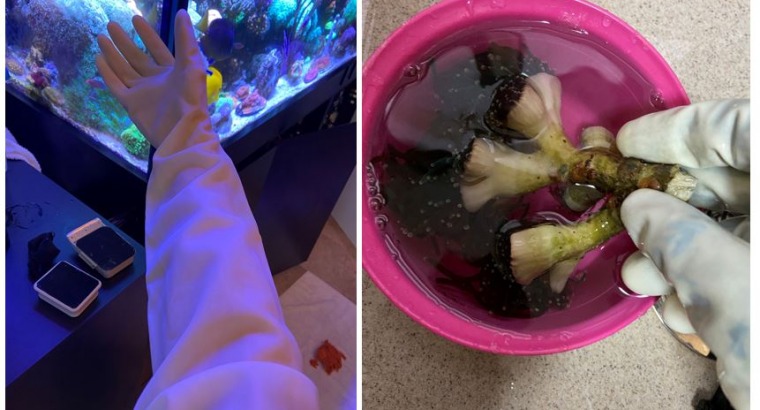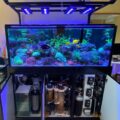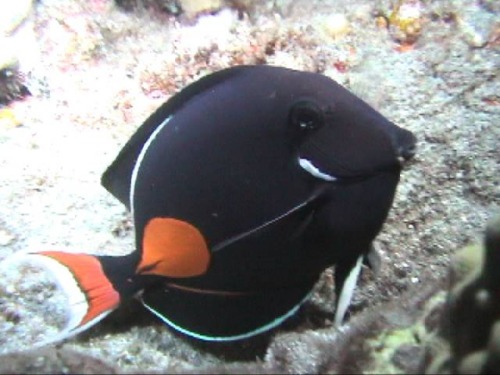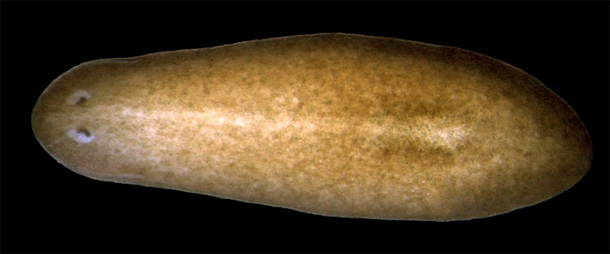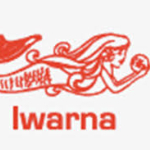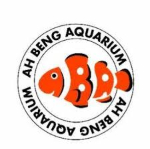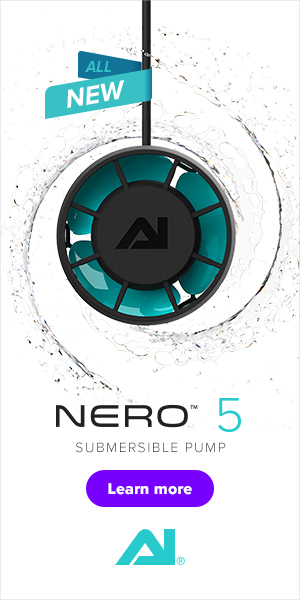Protect yourself. Protect your tank.
Do you get rashes when doing tank maintenance? Are you susceptible to dermatitis or eczema since you started reefing?
This is a 2 part topic about wearing gloves when working on your tank. And about alternatives to using a bandage if you have an existing cut but need to touch tank water.
We need to be reminded that the home aquarium is filled with bacteria & toxins Some may have heard of mycobacterium marinum, an infection that produces skin lesions that is very difficult to treat in humans. Palytoxin is another highly toxic poison from zoanthids & palythoa. Mild symptoms include rashes & numbness. But severe cases can lead to kidney failure & coma.
Personally, I avoid putting my bare arms in the tank to minimize or even avoid transferring moisturizer & skin dirt into the tank.
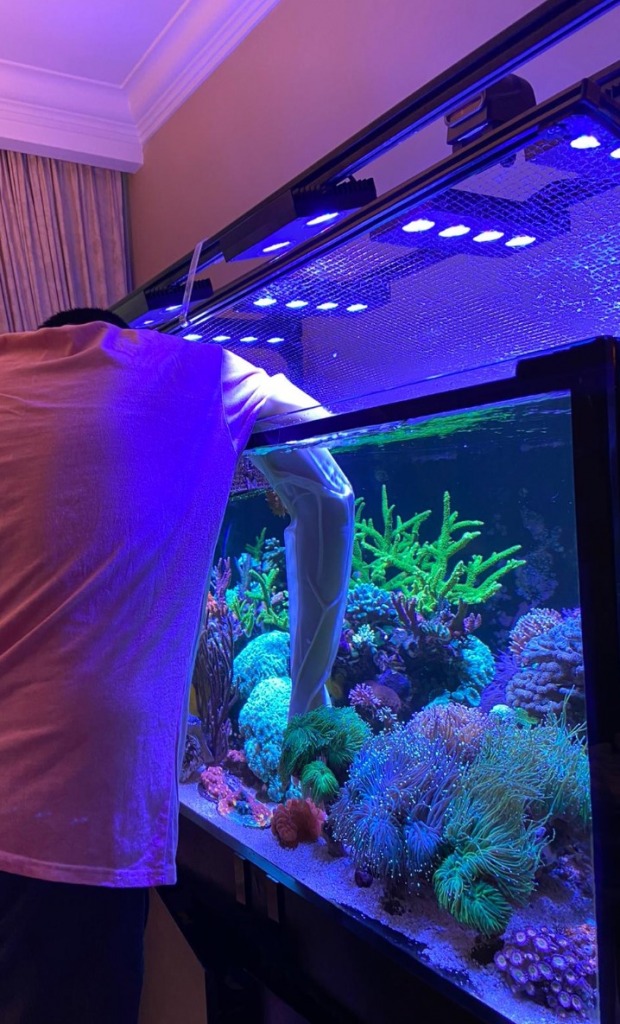
Most folks don’t bother with gloves. For many, it’s not an issue. This is what a dermatologist at National Skin Center said:
“When skin is healthy, it has many layers to protect us. But when the barrier is compromised, we lose that 1st layer of protection. Bacteria & toxins can enter our bodies causing rashes or in more severe cases, poisoning.
As we age, the surface layer of the skin (epidermis) thins out. Skin loses elastic tissue (elastin & collagen). Basically, it becomes more fragile as we age. This is an irreversible process.
Salt in particular is very dehydrating and accelerates the degeneration of one of the most important organs of the human body – skin.
Moisturize at least twice a day.
While steroid creams can heal eczema & rashes very quickly, it is not to be used long term. Steroids thin the skin (same effect as aging process). Similarly, this is irreversible. Thin skin breaks easily. “
In this article, I will share some thoughts on glove products used.
Disposable gloves are good options as most have a ‘tight fit’ – allowing you to feel what you are doing (e.g. Fragging corals or fixing equipment). If the gloves have a tendency to slide off, just use an elastic band or elastic Velcro strap (~20-30cm is good) to secure it.
Nitrile gloves are my preferred choice of material for reefing use. Nitrile is short for acrylonitrile-butadiene rubber. This synthetic material is notably more durable & resistant to chemicals. The ‘standard blue’ gloves are about SGD$12 for 100 gloves

Nitrile gloves come in different colours and thickness. Gloveworks for example are much thicker for added durability (to be used at workshops). Some have raised dimples for better grip. Prices vary.

I always disposable gloves when gluing corals – better to get glue on the glove than on your skin.
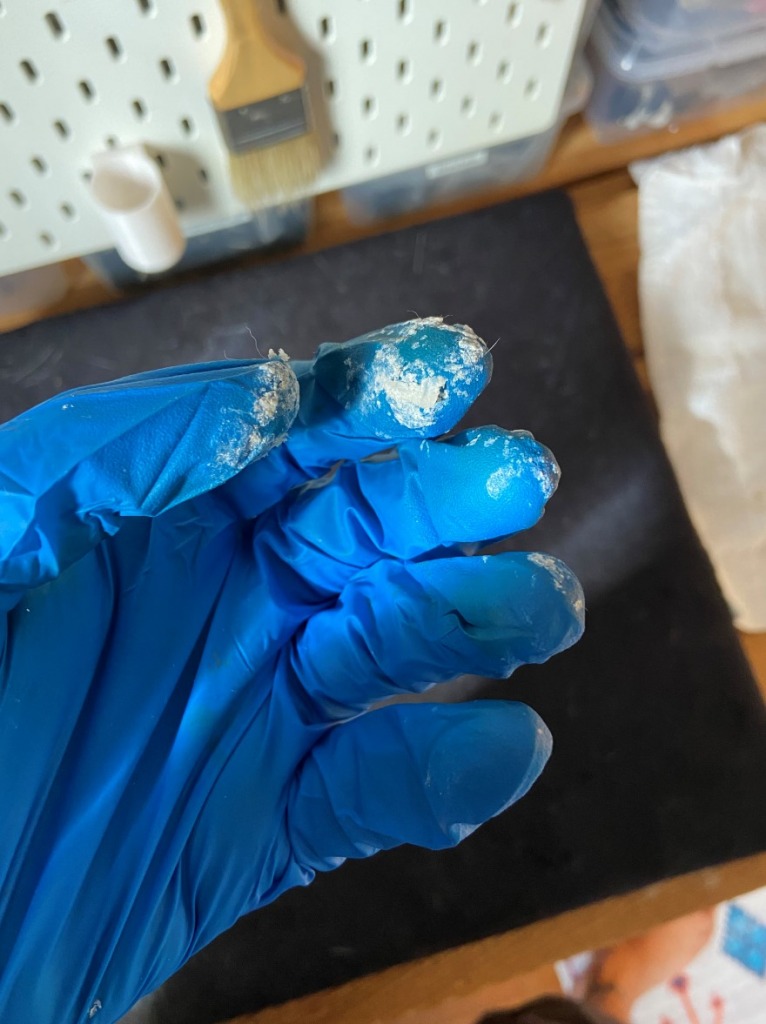
Vinyl gloves are made from PVC (a petroleum-based film). They are relatively cheap but less durable. Vinyl is less elastic than nitrile & latex, hence giving you a looser and more comfortable fit. I don’t like these for the hobby. Breaks too easily.
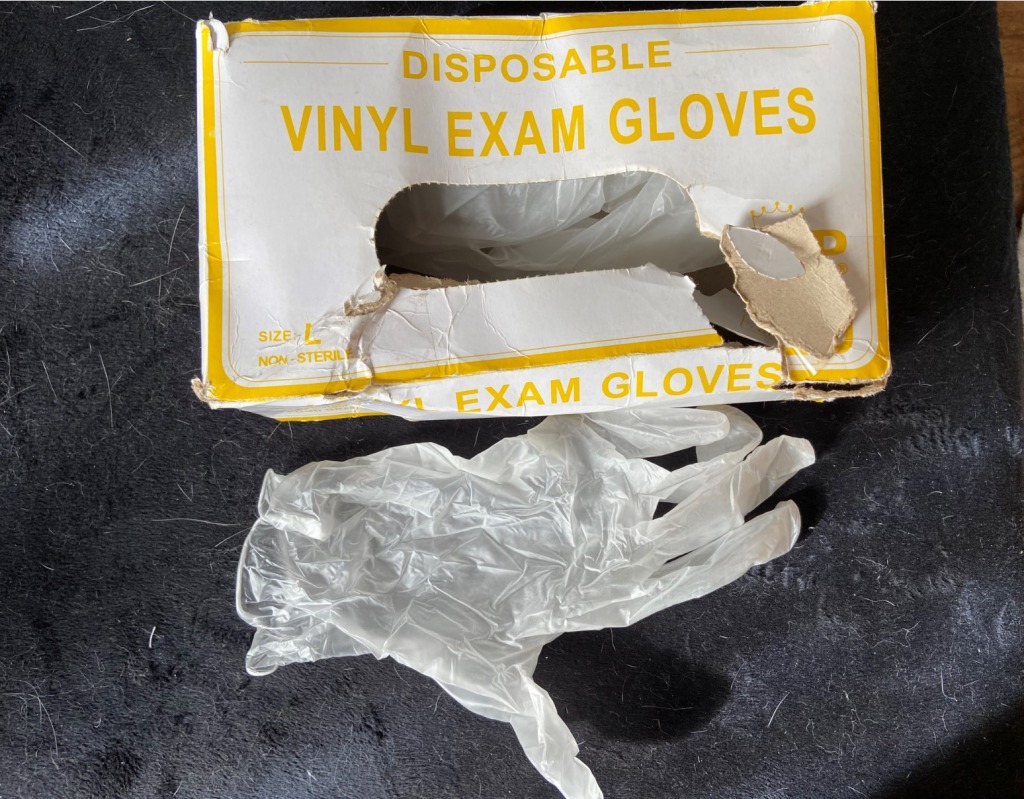
Polyethylene (PE) gloves are most common in the food industry (food safe). They are about 75% cheaper than nitrile gloves. But they are usually quite thin & break easily. PE gloves are generally loose fitting & not practical for handling frags.
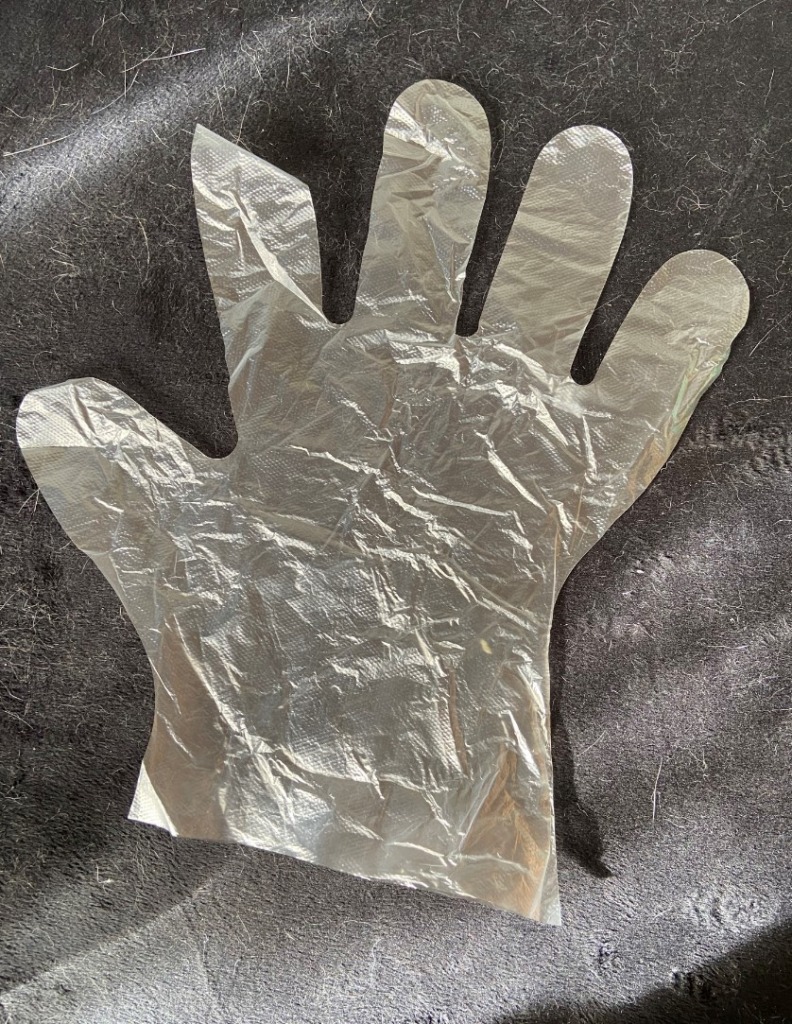
There are full length PE gloves (up to the armpit). These are good if you need to dip your arm into the tank. Look for the thicker variant for veterinary examination but note they still break quite easily.
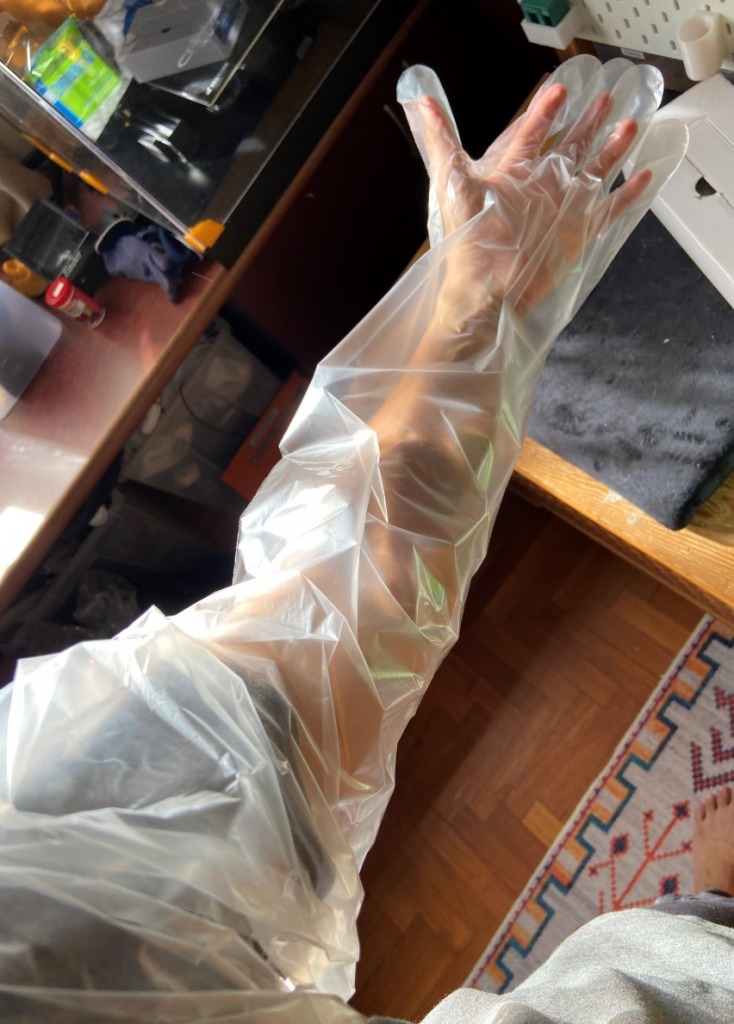
For non-disposable gloves, a good quality one is Kimberly Clark Nitrile glove (G80) The picture below is the variant that reaches the forearm. They have another version that reaches the elbow.

For more heavy duty and waterproof use, my favourite is the ATG MaxiDry. This is a nitrile coated glove. The palm side has a microfoam / non-slip grip. Its thick & very lasting. Snug enough to be able to use for fragging & gluing corals. There is a version that reaches the wrist (see pic). Good for general tank maintenance – mixing salt, washing wavemakers with acid. There is another version that reaches the forearm.

For full length non-disposable gloves, these PVC gloves are very thick & durable. You often see them used by fishmongers. But the main issue is they are a one size fits product where the finger section is very big. Combined with the thick coating, you won’t be able to feel anything when handling small & delicate items.

In general PVC gloves are not food safe. They tend to have a plasticky chemical smell.
These gloves were good for washing rocks & dipping them in vinegar. Now I’ve repurposed them for showering the house cats (and to protect my arms from their nails)

Full length latex gloves. I use these on a regular basis. These are aquarium specific and can be found at good LFS.

It fits the fingers fairly snug & goes all the way to the arm pits. The ends near the biceps are broad and may slip down, so just use an elastic band to secure it in place.
These gloves aren’t cheap. Take good care of them & they should last at least 6 months. As these are made of latex, some basic care is needed. Rinse off the latex powder before first use. Rinse the gloves with water or ideally with mild detergent, both inside & outside to prolong its life.
If there is a need to use them when gluing corals, just slip a nitrile glove over it to protect the more expensive glove.

I hope this article has been useful for you to down-select the right glove to get. In summary, the 3 must have are :
- Full length latex glove if you need to put your arm in the tank
- Nitrile disposable gloves for general use
- ATG Maxi dry for more heavy duty work
And the option to combine the above for your application.
Remedy for reefing related cut & wound injury
Liquid bandages
If you are using a normal bandage or plaster on an existing cut on your finger, you are likely to get it wet along the day (eg washing hands). On the other hand, waterproof plaster don’t seal all that well. Its worse if the plaster gets wet with tank water (risk of bacteria & toxins getting into the cut).
Liquid bandages are something I tried the past year which works quite well. An alternative worth considering.
WARNING : Do note the application process stings like crazy when the chemicals touch your raw wound.

The 2 commonly found in the local pharmacy are LiquiPlast & Betadine Clear Liquid Bandage.

Apply the 1st layer. Brace yourself (for the sting). Allow to dry.

After 2 coats – a reasonably flexible & strong protective film is formed.
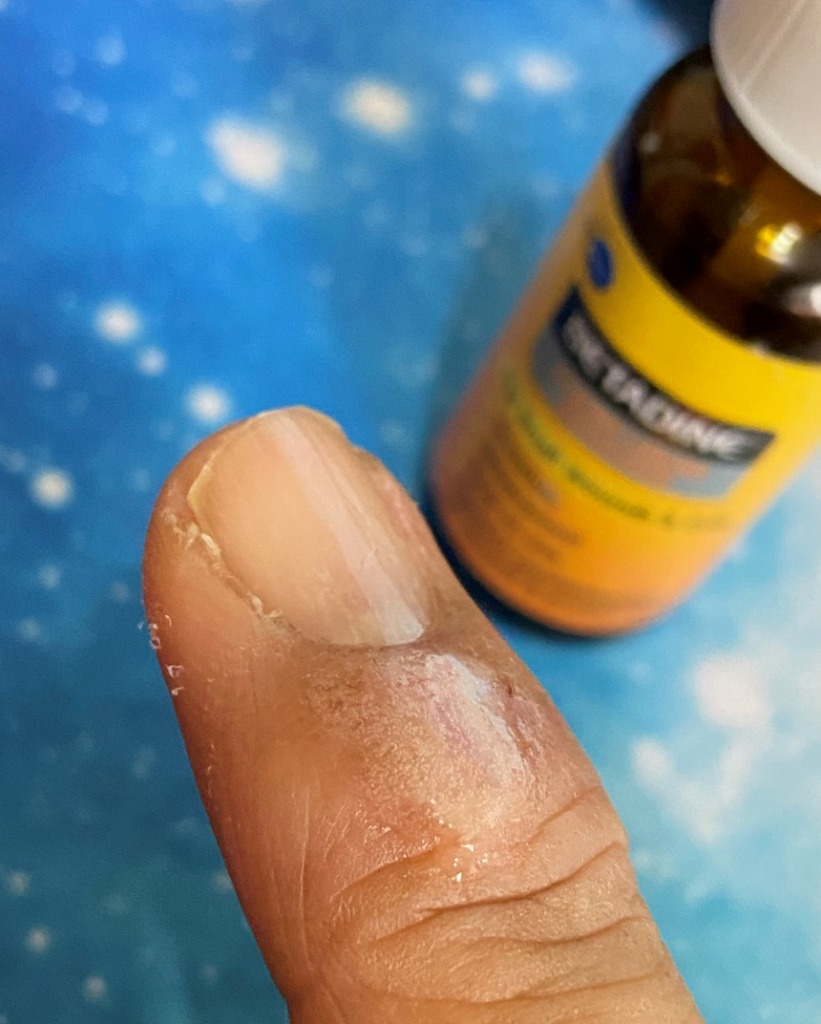
LiquidPlast seem to use more solvent. It adheres to the skin better but is more painful during application.
Betadine is more viscous & forms a thicker layer. It does not stick very well, so apply over a larger area. In general, both works well to give you the added protection from dirty tank water.
Have a happy & safe reefing week ahead.
